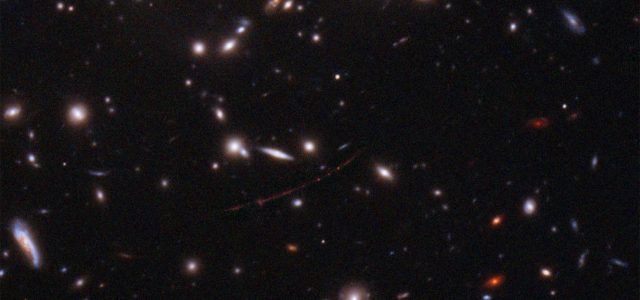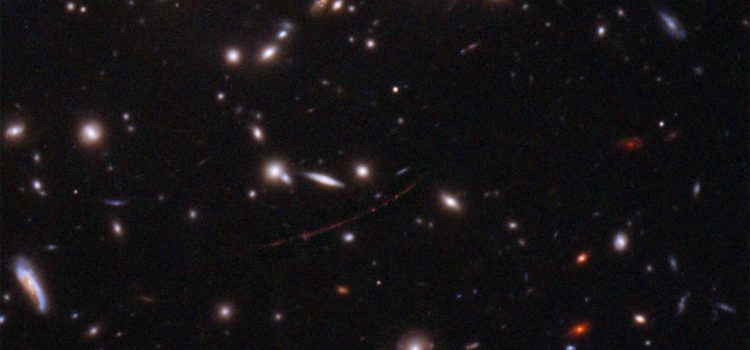


“We almost didn’t believe it at first, it was so much farther than the previous most distant star,” Brian Welch, a PhD student at Johns Hopkins University and lead author of a Nature paper detailing the discovery, stated in a NASA press release. “Normally at these distances, entire galaxies look like small smudges. The galaxy hosting this star has been magnified and distorted by gravitational lensing into a long crescent that we named the ‘Sunrise Arc.’”
By studying this arc in detail, as part of Hubble’s RELICS (Reionization Lensing Cluster Survey) program—which analyzes images taken through these gravitational lenses to peer into the early universe—Welch was able to spot Earendel, which “popped” out from the general glow of its home galaxy, thanks to the lensing effect that amplified its brightness. Welch is a fan of the works of J.R.R. Tolkein and named the star after a character from The Silmarillion whose name means morning star. “We thought that was very apropos, because this is a star from the dawn of stellar formation, the dawn of time,” says Thaler.
Although Earendel is long dead, looking at its “baby pictures” can give us important clues about the nature of the universe and the origins of matter. “You’re actually looking at the time when most of the chemical elements that make up our bodies were formed,” Thaler says. “The universe began with just hydrogen and helium gas. That’s it. Everything else, like the calcium in my teeth or the iron in my blood, had to be formed inside stellar cores that then blew up. And so this first generation of stars produced a huge amount of these heavier, richer chemicals, the things that make life possible.”
Researchers have been able to make basic inferences about Earendel based on its luminosity and color profile. But to find out more—and confirm that it is indeed a single star rather than a binary or triple star system—more observations will be needed. That’s where the newly launched James Webb Space Telescope could play an important role. Hubble is 32 years old and has maybe a decade of life left, so the fact that the star has lined up with the gravitational lens during the brief window when both Hubble and the JWST are available to image it is another stroke of good fortune for scientists. “The two working together will reveal so much more about the universe than we’ve ever known before,” says Smethurst.
Unlike Hubble, which sees mostly in the visible light spectrum, the JWST sees in infrared, which will give it more information about the chemical composition of Earendel. “Webb can actually hone in on that, do some spectroscopy, separate the light into a rainbow to figure out what the chemistry is, what the temperature of the star is, all of that,” says Thaler.
There’s a small chance that Earendel could be what’s known as a Population III star—a hypothetical category of stellar objects comprised purely of hydrogen and helium, which were around immediately after the Big Bang. “We haven’t got any of them like that in the Milky Way because it’s a lot older,” says Smethurst. “It could prove this one last piece of this theory of nucleosynthesis—how elements come to be formed in stars.”
